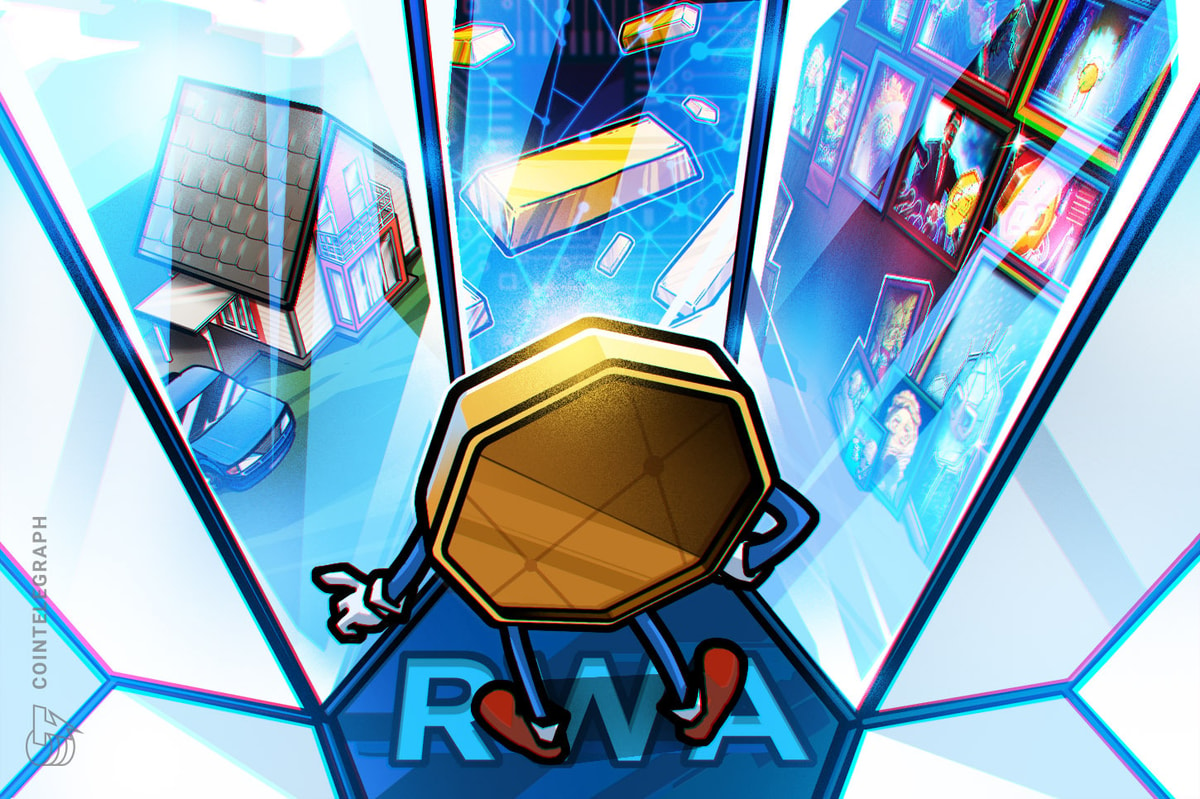On-chain prediction markets are revolutionizing the way people engage in forecasting outcomes, from sports to finance. For example, Azuro, an on-chain predictions market protocol, makes it easy to build and participate in prediction markets. By providing advanced tools, oracle solutions and a unique liquidity model, Azuro allows developers to create apps quickly and without upfront costs.
In this interview, Dan Kaizer, chief technology officer and core contributor of Azuro, delves into the current state of on-chain prediction markets, the unique features of Azuro’s protocol and the future potential of this evolving industry. Kaizer also shares insights on Azuro’s recent funding, partnerships and the upcoming token generation event for the AZUR token.
Cointelegraph: What are on-chain prediction markets and how do they work?
Dan Kaizer: Humans have always had a desire to predict outcomes in areas like weather, stocks, sports, finance and politics. Typically, if you wish to bet on the outcome of a particular event, you set conditions through an entity that matches your prediction with a counterparty. With blockchain, there’s no need for middlemen. All transactions are handled by a smart contract.
Running prediction markets off-chain is a hard business. Development costs, getting access to the correct information and, yes, liquidity. With Azuro’s on-chain model, we simplify most of the essential aspects, dramatically reducing entry barriers.
Using the Azuro protocol means, as an entrepreneur, you’re removing development and staffing costs and payment processing. In other words, you free up resources to focus on what’s most important for your business: user acquisition and retention.
For end-users, the benefit is instantly clear: all terms are regulated by smart contracts, eliminating manipulation risks whatsoever.
CT: How do you position Azuro in the on-chain predictions market? What sets Azuro apart from others?
DK: One of the biggest challenges we tackled at Azuro is liquidity. We introduced a peer-to-pool model that efficiently allocates liquidity across various markets without overexposing liquidity providers (LPs). This means LPs no longer need to manually create markets or take on specific risks.
Azuro also runs on a permissionless basis, with all transactions and market activities regulated by smart contracts. This ensures transparency for everyone involved, from LPs to end-users.
Since our launch, over 28 applications have used our protocol, onboarding more than 27,000 unique users and resulting in over 4 million transactions. To date, the protocol has seen volumes in excess of $360 million.

Source: Dune
Azuro can support any Ethereum Virtual Machine (EVM) compatible blockchain. So far, we have integrated networks that understand the challenges of on-chain prediction markets. Our expanding ecosystem has made us one of the fastest-growing protocols on Gnosis and a multi-month revenue leader on Polygon PoS.

Source: Azuro
CT: Azuro recently received significant funding from notable venture capital firms. Could you share the details of this round? And how do you plan to utilize these funds?
DK: This year, in April, we announced the raise of $11 million. This round was supported by leading contributors like SevenX Ventures, Fenbushi Capital, Arrington Capital, Polymorphic Capital, Red Beard Ventures, Dewhales and G1 Ventures. Many contributors have been participants of Azuro’s seed round back in the day, so it’s been great to see their continued support as we grow and look ahead to exciting milestones in our roadmap.
The infusion of funds from this round is planned to be deployed to further accelerate the ecosystem development and the expansion of Azuro’s proposition. Within the predictions industry, there are still plenty of niches that haven’t been explored yet and could add huge revenue streams to Azuro-run businesses. Thanks to this new round, we can tap into that.
CT: Azuro has partnered with Chiliz to accelerate the adoption of on-chain sports prediction markets. Can you share more details about this partnership and its expected impact on both Azuro and the sports prediction market?
DK: Azuro and Chiliz are really made for each other. We’ve partnered with Chiliz, seeking ways to accelerate the adoption of on-chain sports prediction markets. The main idea is to provide millions of fans worldwide with further support and cheer for their favorite teams and athletes through fair and transparent prediction apps.
As part of this collaboration, Azuro has added support for Chiliz Chain, which enables developers to develop apps using the combined infrastructure. New and existing builders relying on Azuro infrastructure can connect their apps to the Chiliz Chain and allow users to place transactions with the blockchain’s native token, CHZ.
CT: With over 25 apps already working on top of Azuro, what has been your approach to attracting and supporting developers and projects to build within your ecosystem?
DK: The biggest challenge was attracting the first apps. Once we had successful examples like bookmaker.xyz and Bookiebot, interest began to grow. However, the next critical step was creating a clear process that showed everyone in our ecosystem how they could work with it. High-quality, well-structured documentation became essential for this.
Additionally, building and nurturing a developer community on Discord was important. These tasks, and many others, are handled by our developer relations (DevRel) team. I’ve noticed that in the crypto space, the role of DevRel is becoming increasingly important. For us, that’s a must have.
CT: Azuro is preparing for the token generation event (TGE) for the AZUR token. What can you tell us about the upcoming TGE and its significance for Azuro?
DK: Yes, of course, the TGE is a very major event in the Azuro ecosystem. It is something everyone has been waiting for, as it marks a significant step toward decentralizing the governance of our protocol even more than it already is. Holders of the AZUR token will be able to vote, stake and get perks as the ecosystem expands.
Besides its utility for the protocol, I think the TGE can also help attract more attention to the project, which in turn could lead to higher volumes on the protocol and a greater number of applications being launched.
CT: Looking ahead, how do you envision the future of on-chain prediction markets?
DK: Global online prediction markets are expected to be worth $137 billion by 2029. If only 20% of that share would be on-chain, we’re talking about an opportunity worth over $20 billion. And I think that’s a realistic scenario. It’s only natural for people to search and migrate to solutions that offer better conditions. Traditional prediction markets have many flaws that on-chain solutions like Azuro actively and effectively address. So, industry-wise, I expect to see an increasing number of users coming in across platforms.
When looking at Azuro, I feel we’re constantly evolving to better satisfy the needs of builders and users. For example, we’re exploring the launch of a native Ethereum layer 2, optimized specifically for on-chain prediction applications and their user base. In the short term, I see that manifesting in new business verticals that can bring additional monetization opportunities to entrepreneurs, such as turn-key on-chain games.
Disclaimer. Cointelegraph does not endorse any content or product on this page. While we aim at providing you with all important information that we could obtain in this sponsored article, readers should do their own research before taking any actions related to the company and carry full responsibility for their decisions, nor can this article be considered as investment advice.












